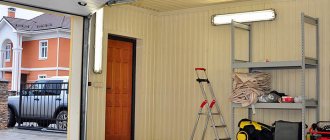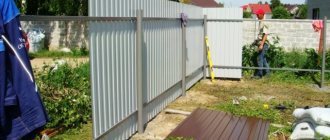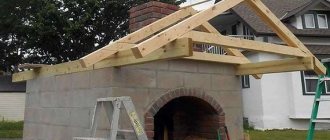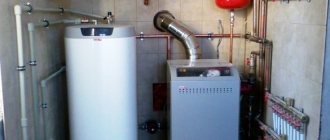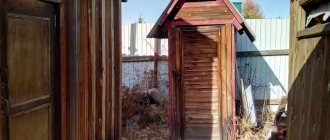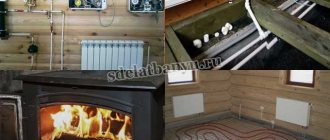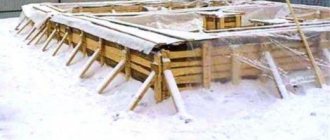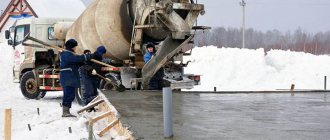Energy prices are steadily rising, so an increasing number of suburban residents are thinking about how to inexpensively and efficiently heat their homes. Most often, homeowners are concerned about what heating options are available for a private home and country house, which boiler has the highest efficiency, which boiler to choose for the heating system, how to properly install the heating system, what types of heating without gas exist and which ones are the most economical.
FORUMHOUSE advises a different approach. First, we decide on the type of fuel, and then we select a heating system “for it.”
From our material you will learn:
- What are the costs of a heating system?
- What type of fuel can be called the most affordable;
- What does a convenient heating system mean?
- Can heating with electricity be cheap?
- What can become the basis of an economical heating system.
What determines the choice of heating method for a summer house?
As a rule, a summer house is an object of periodic use, especially in winter. People travel outside the city to relax and enjoy clean air, and some even live in their dachas permanently.
The country houses themselves vary greatly - from light and poorly insulated to real cottages with several floors.
When choosing heating options for your dacha, you need to consider a number of important points:
- frequency and duration of stay in winter;
- what energy resources are available and will cost the least;
- distance from populated areas and organization of security of the holiday village;
- need for hot water supply.
In each case there may be additional nuances. For example, a dacha is combined with a bathhouse and it is more correct to provide one heat source for them. Or you have a large family, then you need to maintain a higher temperature in the rooms. The nuances must be taken into account when choosing a heating method.
Particular attention should be paid to the issue of security; this is one of the features that distinguishes a dacha from an ordinary private house. Unfortunately, security in holiday villages is often poorly organized or non-existent, and burglaries are not uncommon. Imagine that you bought and installed expensive electric convectors, and they were stolen after you left. It turns out that the massiveness of the heat source plays an important role, so that it cannot be dragged away. These include heavy boilers, brick fireplaces, stoves, and so on.
How does infrared film work?
Infrared film is one of the alternative methods of heating a room. It accumulates heat rays and releases them out. The specifics of its action can be compared to how the sun heats the asphalt in summer. If you have an electric heating system installed at your dacha, use infrared film. It will help save more than 20% of heat, and you will not need electric heaters.
IR film has the following characteristics:
- operates on a 220 volt network;
- peak power consumption – 210 W/m²;
- daily electricity consumption – from 20 to 60 W/m²;
- maximum heating temperature – 55©;
- width – from 0.5 to 1 m.
The film is heated within 5-7 minutes. It can be quickly installed anywhere without worrying about the height of the ceilings. During operation, avoid contact of the film with sharp and cutting objects.
Heating system requirements
Depending on individual conditions, different requirements may be imposed on the heating of a country house, but there are also general ones that will always be relevant:
- quick heating of rooms;
- the heating system must use available energy carriers, possibly several;
- reasonable cost of equipment and installation work;
- efficiency and economy;
- the ability to function in periodic mode and withstand frost during downtime without consequences.
In order to make it easier for you to choose the optimal method of heating your dacha, we will consider real options for heating with different energy sources and how well they meet the listed requirements. Then you can add your wishes to them and determine which method is better.
Electricity
At the moment, most holiday villages are not gasified, but electricity is available almost everywhere. Accordingly, electric autonomous heating without gas is of great interest and deserves consideration as one of the most affordable options. Its advantages are speed and low cost of installation, relatively low cost of equipment and reliability in terms of frequency of operation.
As for economy and efficiency, any electric heaters take first place in this regard. Their efficiency is 98-99%, which is higher than when burning any type of fuel.
The modern market offers a wide selection of means for heating a dacha with electricity. For well-guarded dachas or those where residents stay permanently, any of them are suitable:
- convectors and fan heaters;
- oil radiators;
- infrared heating systems;
- cable and film heated floors;
- water heating with electric boiler.
Electric fan heaters and convectors warm up the room the fastest, at least according to human sensations. Oil radiators take a little longer, but they also take longer to cool down. All these devices heat the air in the house and do not require installation, except for wall-mounted convectors. This household appliance can easily withstand the cold, and its maintenance comes down to periodic cleaning.
In an apartment, the light weight and size of an electric heater are an important advantage, while in an unguarded dacha this is a disadvantage; the devices are easy to steal. In addition, such electric heating will not provide the house with hot water, and for a certain part of people it causes discomfort and affects well-being.
Infrared heating devices have the same disadvantages, only the higher cost of equipment and installation work must be added to them. The exception is portable infrared heaters, but they feel like they warm up rooms too slowly. To feel the heat emanating from them, you need to be in the radiator’s coverage area. On the other hand, infrared heating does not have a negative impact on human well-being.
Metal stoves
The efficiency of a metal furnace depends on the density of the fuel. There should be no free space between solid elements. Firewood inside a metal stove must be placed in a cage. The denser the filling, the longer it will burn, providing heat to the entire room. When properly stacked with firewood, a metal stove retains heat for 24 hours.
As wood smolders, it releases heat energy, and the stove has a special compartment for air supply. The characteristics of the metal affect heat transfer and thermal conductivity. Despite the weak accumulation of heat, the thermal conductivity of the metal is high. This stove produces heat efficiently, is compact, and can be installed anywhere. Cast iron stoves are reliable and last longer than products made from other materials.
Advice! You can buy a stove of an unusual shape to decorate your country house setting.
Metal stoves are not installed in large houses, because they will not provide a comfortable temperature in a building with a large area. Their safety level is lower than that of stone or brick products, but they are quite suitable for a small dacha. You need to follow safety precautions and stack firewood correctly.
Stationary heating means with electricity
Electric cable or film floors are perfect for heating a dacha. True, you will have to incur costs for the purchase of heating elements and installation under the floor covering or in the screed. But such equipment starts easily from subzero temperatures, and it is also impossible to steal.
Disadvantages are long-term heating of the premises and the inability to heat water; this requires an electric boiler or a separate water heater.
The most convenient and functional traditional heating method is a water system with an electric boiler as a heat source. Its negative aspects are significant financial costs for installing the system and a long heating time for the building. In addition, during your absence, the water system is in danger of defrosting. But by installing a small indirect heating boiler in addition to the boiler, you can get hot water for household needs at your dacha.
To avoid defrosting, you need to purchase antifreeze, and use it to prepare and pour liquid into the heating system.
Important disadvantages of electric heating in general are the high electricity tariff and the limited power consumption limit. Regarding various heaters, you could see for yourself that they all have pros and cons; the appropriate option is selected individually.
Installation of heating devices
Initially, the boiler is installed, since it is best to supply heating to consumers from it. If possible, a separate room is selected for the boiler, where additional supply and exhaust ventilation is also installed. If the boiler runs on coal, this will prevent coal dust and soot from entering the interior. But the boiler can be installed at the dacha in another place, for example, in the hallway, in the kitchen. You can do the work yourself, or invite specialists for this purpose.
Radiators
Radiators are installed under windows after their power has been previously calculated. Their installation is simple, you can easily hang them yourself. To do this, you need a good hammer drill, mounting hardware and a radiator. The fastening must be reliable, able to withstand not only the weight of an empty radiator, but also one filled with water, and additional loads.
Pipes
The routing of pipes begins from the return, moving in the direction from the boiler, maintaining the angle of inclination of the pipes. The supply pipe must be higher than the return pipe. At the final stage, all heating devices are connected. The connection method depends on the choice of pipe material.
System pressure
If the system operates under pressure, then it is necessary to monitor the readings of the pressure gauges. Normal operation of the system is indicated by the absence of a decrease in pressure within 15 minutes of no more than 0.2 kgf/cm², then the test is considered successful. The installation ends with a thermal test, during which the quiet operation and uniform heating of the heating devices are checked, and leaks are eliminated. At the end of the heating season, the chimney is checked and cleaned.
Gas
Of course, gas heating is one of the most convenient for a dacha; there will be quick heating and hot water. The efficiency of the installations is high, reaching 92%. But the price of the resource varies greatly in different countries. In the Russian Federation, heating a dacha with gas is realistic, in Belarus or Ukraine it is already problematic, where its price is much higher. And gas mains are not laid in dacha cooperatives, with rare exceptions.
When the house is gasified, heating in the dacha can be done in two ways:
- install a double-circuit boiler and mount pipelines with radiators;
- install gas convectors in the premises, thereby organizing air heating.
The main difficulty when installing gas heating is obtaining permission to connect to the main line. Carrying out the procedure in relation to a country house is not economically feasible. The solution is to heat with liquefied gas, but this only makes sense in Russia, where the price of fuel is acceptable.
Some useful tips
If your home maintains a constant temperature of about 5©, this is enough to “start warming up”. Stable temperatures will be ensured by high-quality insulation of doors, windows, roofs, floors and ceilings. They cannot be neglected: this will lead to large heat losses. Heating systems will not be able to warm up a room that does not have reliable insulation.
Use electric heaters with temperature sensors. There are safe devices that can be left unattended for a short time. In winter, save heat and do not heat unused rooms. For wintering at the dacha, a heated kitchen and one room are enough. Place other parts of the house in case of emergency.
When installing a boiler or furnace, learn how to properly add and use fuel. This will help you retain heat and maximize the efficiency of your heating system.
There are many ways to heat private homes. Each of them has its own specifics. Before installing a boiler or furnace, you must take into account all the details of their operation. You can make a simple stove yourself, but to install a complex installation it is better to invite a specialist.
Stove and solid fuel boiler
Heating your dacha with wood is the easiest thing to do if you are not in the desert. There is no need to obtain any permits, and it is impossible to drag away bulky equipment. Both the stove and the boiler feel normal at low temperatures, this is important for periodic use. An exception is boilers equipped with electronic control units; this modern technology may fail when started in cold weather. So it is better to organize heating of a country house with a solid fuel boiler of a simple design, without electronics. The efficiency of such units does not exceed 75%.
The heat generator, as in the case of gas, will have to be connected to a water heating system, filling it with antifreeze. At the initial stage, count on a significant investment of money, since equipment, piping elements and heating devices with pipelines will not be cheap. When the house is small, this is irrational; it is better to organize stove heating. The choice of metal stoves is extremely wide; you can choose the right one both for money and for every taste.
Metal and brick stoves with water heating quickly heat up themselves and warm up the room; in addition, they can supply heat to radiators in adjacent rooms, as well as prepare water for hot water supply. But the efficiency of the furnaces is low - about 60%.
Building a brick stove is not always expensive; here you need to choose a successful design, for example, build a Dutch stove or a small Swedish stove. It can include a hob for cooking, an oven and a water tank. For aesthetes, we can advise you to build a fireplace out of brick or purchase a ready-made metal one.
Despite all their advantages, stoves and fireplaces require chimneys and also take up a lot of space. A solid fuel boiler can be taken outside into an extension, but the stove will take up useful space in the house.
Proper thermal insulation in the house
When building a private house, you need to immediately insulate the roof. It has a frame structure. It is covered with other materials, so insulation must be laid during the assembly process. There are types of insulation that are laid on top of the ceiling: these are large slabs of extruded polystyrene or foam. The same material is used for wall insulation. In addition to polystyrene, you can use other types of “thermal insulators”:
- mineral wool;
- polyurethane foam and basalt blocks;
- polyurethane foam.
These materials are used to insulate ceilings, walls and floors. They retain warm air without allowing cold and moisture to pass through, which reduces the cost of artificial heating. Large cracks can be sealed with polyurethane foam, and slabs can be laid on top.
Information! High-quality thermal insulation materials are produced by the Russian company Izoplat.
Diesel fuel
This case is appropriate if the owner of the dacha no longer has any energy resources at his disposal. This really happens, diesel heating comes to the rescue when there is no gas, the limit on electricity consumption is too small, and transporting firewood is too far or expensive. The cost of the equipment is comparable to gas, as is the efficiency (92%), only connection permits are not required. This is where the positive aspects end, the reason is the price of diesel fuel, the operation of a diesel boiler cannot be called cheap.
To heat a dacha with diesel fuel, in addition to the boiler, you still need the same water heating system and radiators filled with antifreeze. The water heating function is also available if you purchase a dual-circuit heat generator. A warning is appropriate here: it is better to take the unit with a minimum of electronics, which can fail at subzero temperatures.
For those who like to do the heating installation themselves, there is an alternative: a homemade boiler using waste oil. You can make it yourself, spending a minimum of money. The game is worth the candle, provided that such fuel is available to you.
Installation features
As we have already said, when connecting electric heating in a wooden house, you must adhere to several important requirements, namely:
- When heated, wood can dry out and crack, so avoid direct contact with the heat flow on the walls and ceiling. It is best to point the devices towards the floor and towards the center of the room.
- If you decide to use radiators, their installation in a wooden house also has its own peculiarities. Over time, wood shrinks. If you do not provide special compensators on the risers in the design of the house, during shrinkage the heating main may be disrupted and fail.
- The power cable from which the electric boiler (or boiler) will be powered must be able to withstand current loads with a reserve. Otherwise, ignition may occur from spontaneous combustion of the electrical wiring. To prevent this from happening, calculate the cable cross-section based on power.
- When using UV intensifiers, place them in such a way as to prevent direct (or very close) contact of the heating element with other objects.
